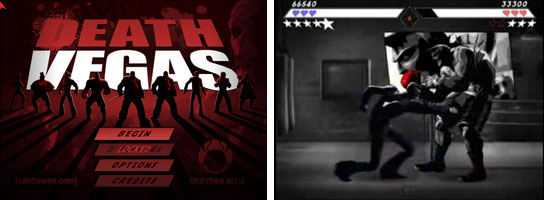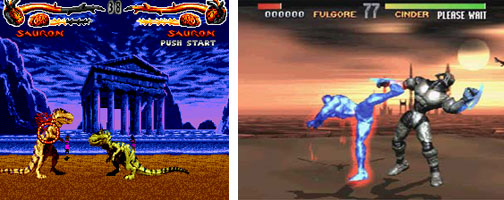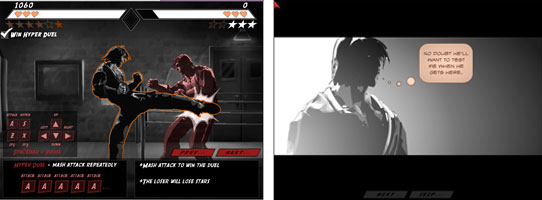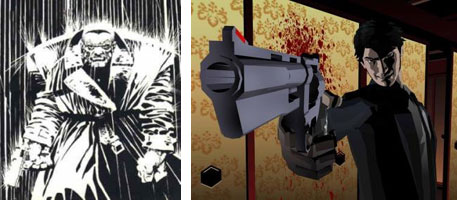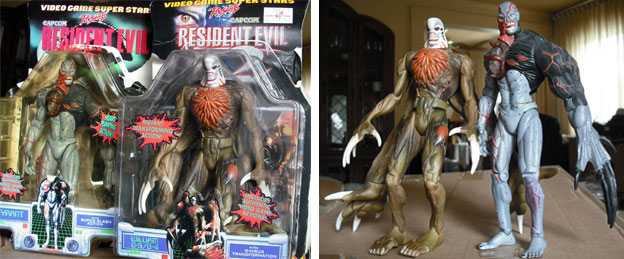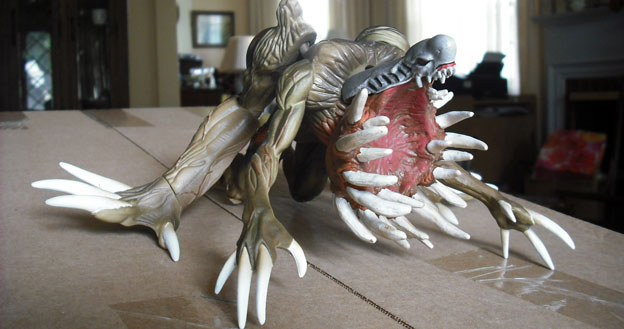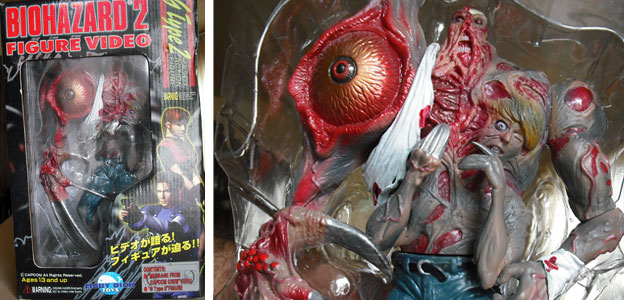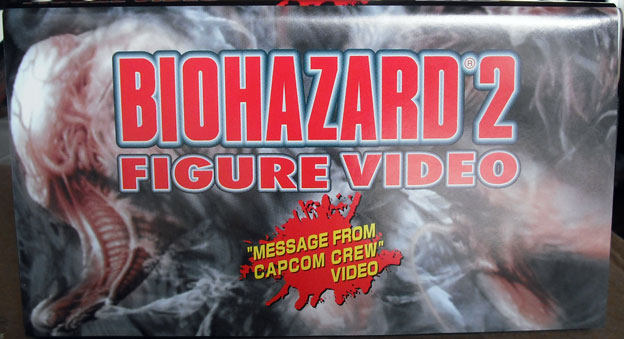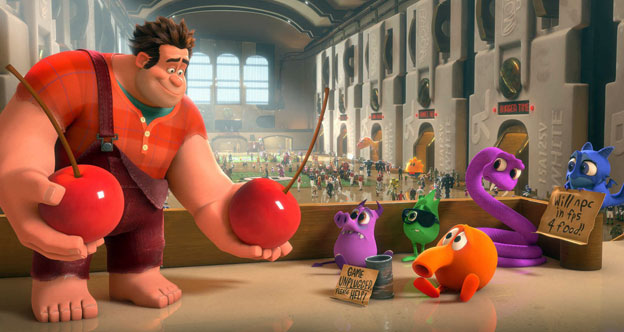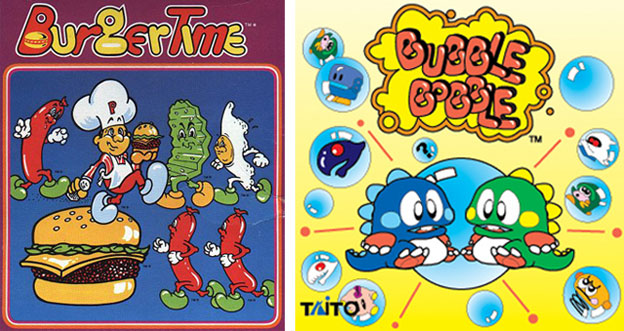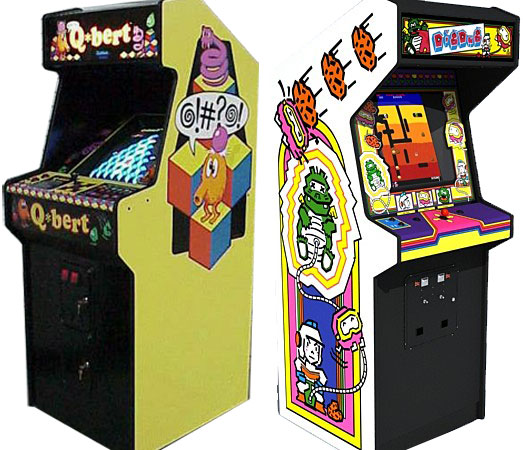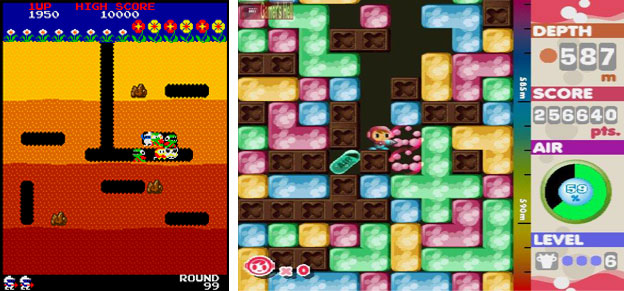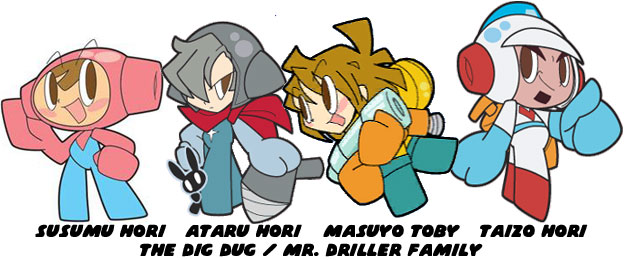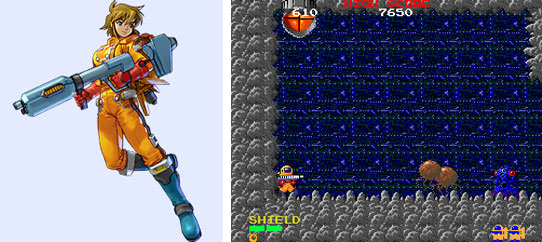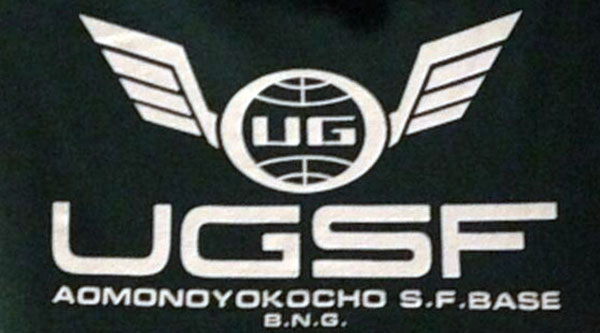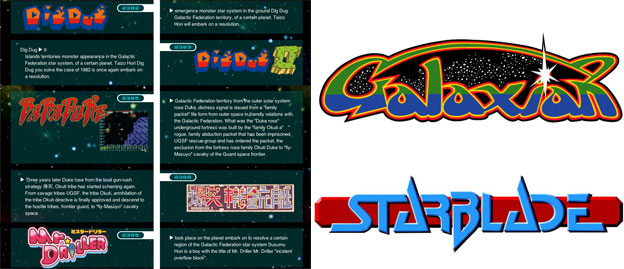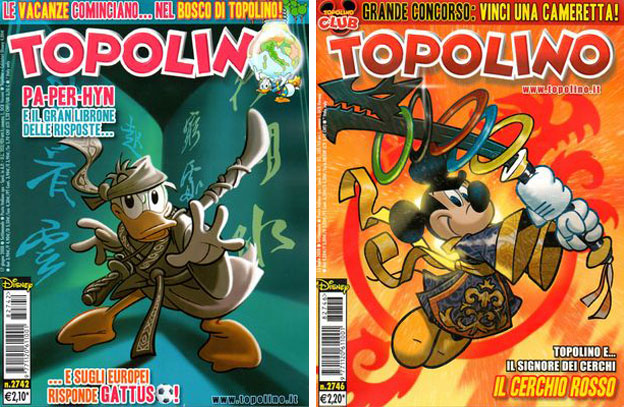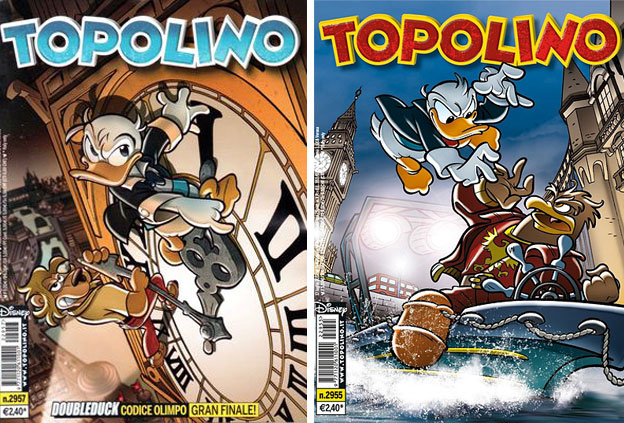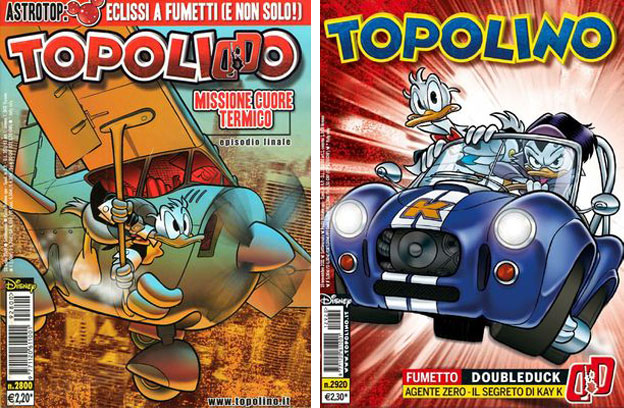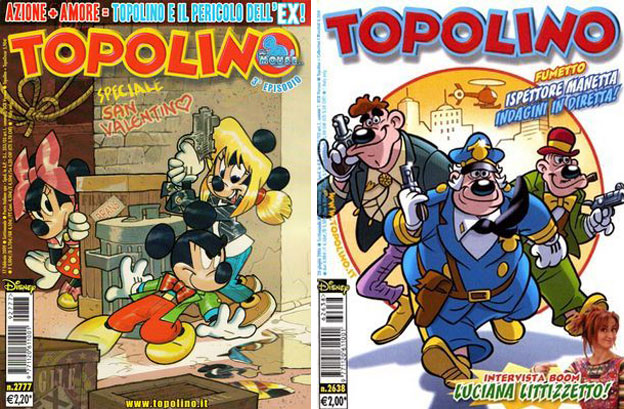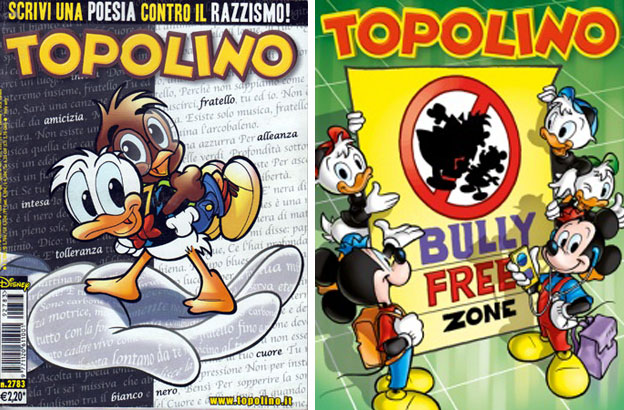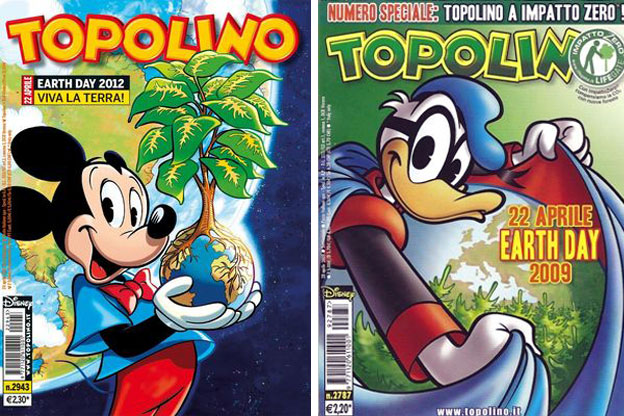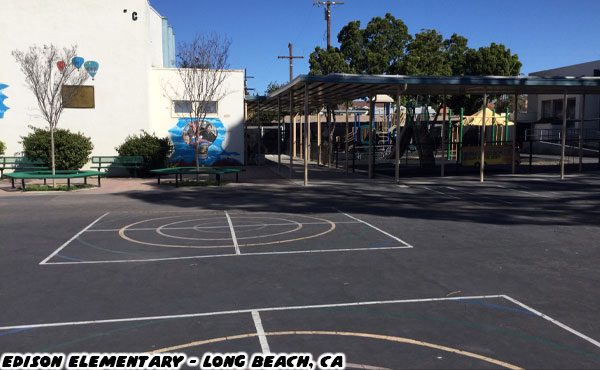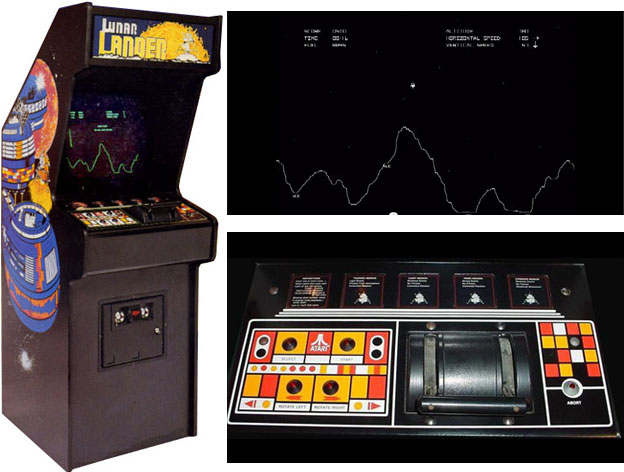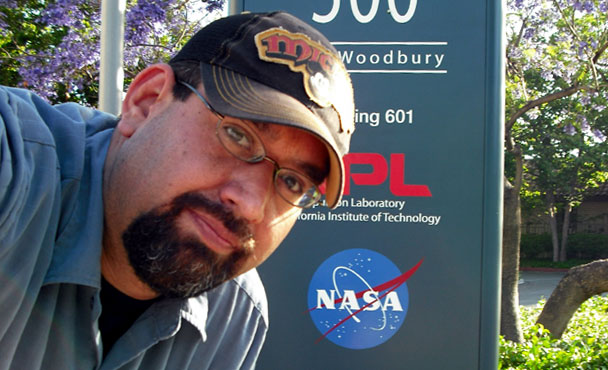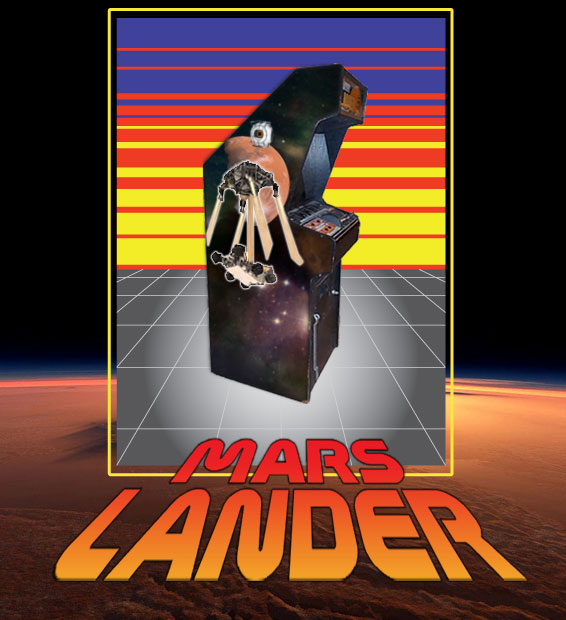In March 2023 I did a month long series on my Twitter, and Instagram celebrating the contribution of women in the history of monster trucks. As a huge monster truck fan I wanted to share the posts here on my blog as well. I hope you enjoy, and I hope that you are having a wonderful holiday season!
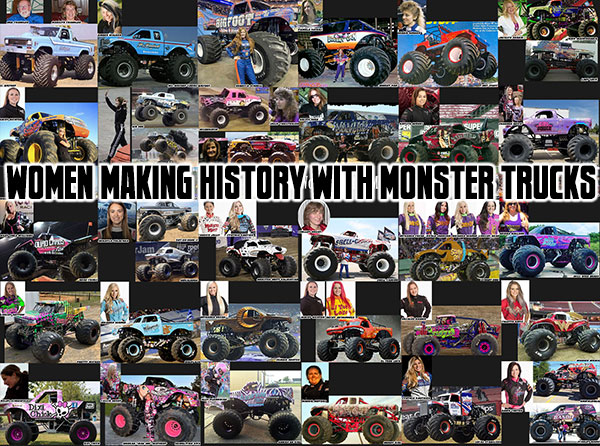
I’ve been keeping this in my back pocket for a while. For women’s history month I’ve always wanted to celebrate the women that helped shape monster truck history. Starting with Ms. Bigfoot, Marilyn Chandler. The wife of the of monster truck innovator Bob “Bigfoot” Chandler. She got tired of him having all the fun, and asked for a truck of her own in 1985. The rest as they say is history.
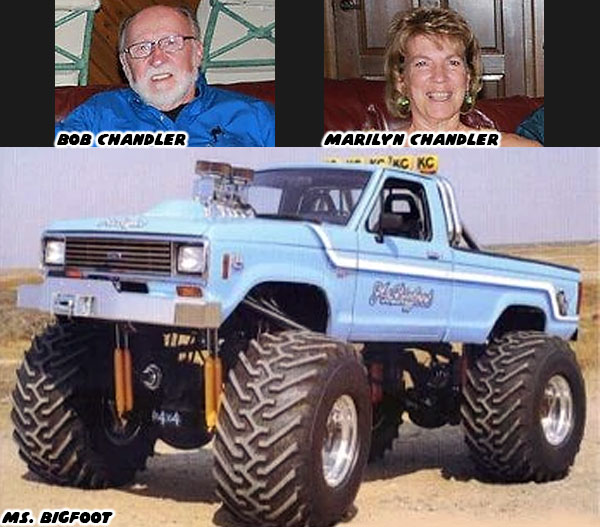
Amber Walker drove the updated Ms. Bigfoot (2010).
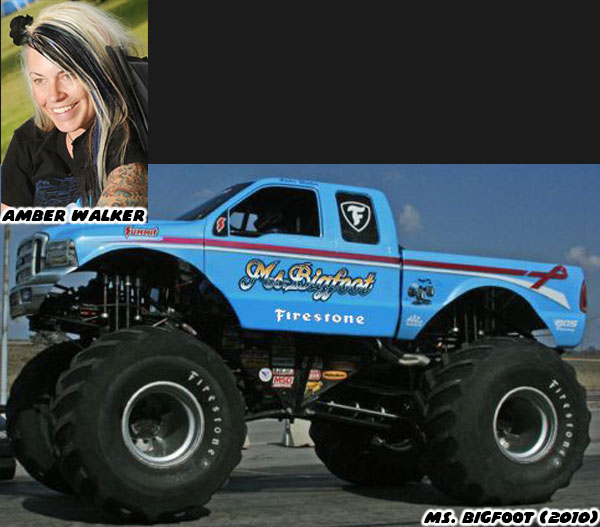
And these days Bigfoot is sometimes driven by Rebecca Schnell. She even lets her husband Darron Schnell drive it from time to time.
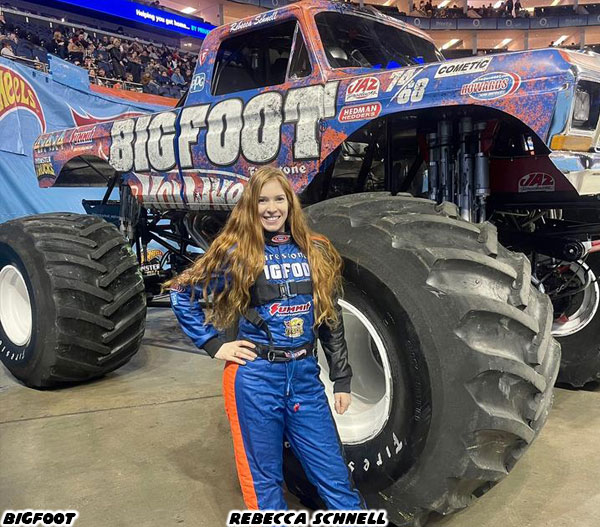
There weren't many monster trucks built out of Jeeps. For the obvious safety issues in the event of a rollover. One of the first brave enough to race with one was Debbie Rhoden in the bright red Hot Stuff.
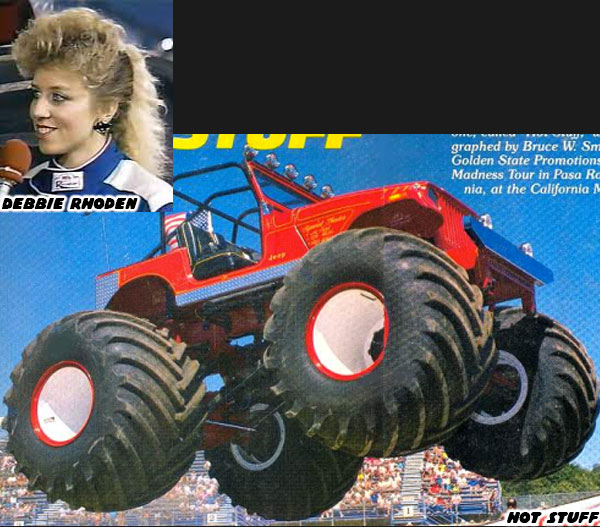
Contrary to popular belief Brodozer was not the first diesel monster truck. Those were in competition for decades. One of the pioneer drivers was Michelle Simpson who piloted the Air Dog, and XDP trucks.
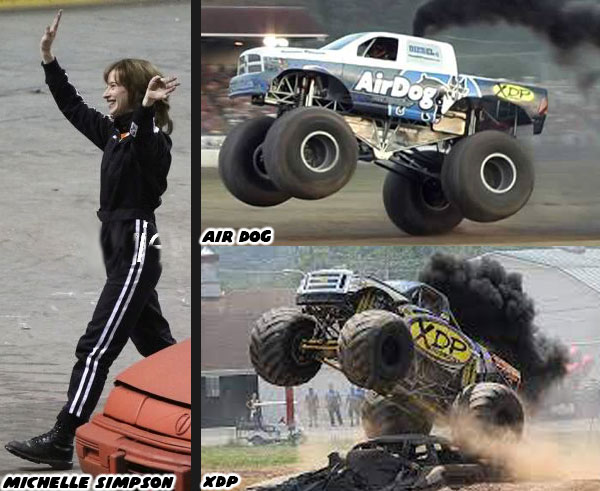
Meredith (May) Doulton, and husband Seth formed Golden State Promotions in the early '80s. They were among the first to get big name sponsors for trucks like the Skoal Crusher, and AM/PM Boss. She competed, and advertised at the same time. It was genius, and she is overdue for the monster truck hall of fame!
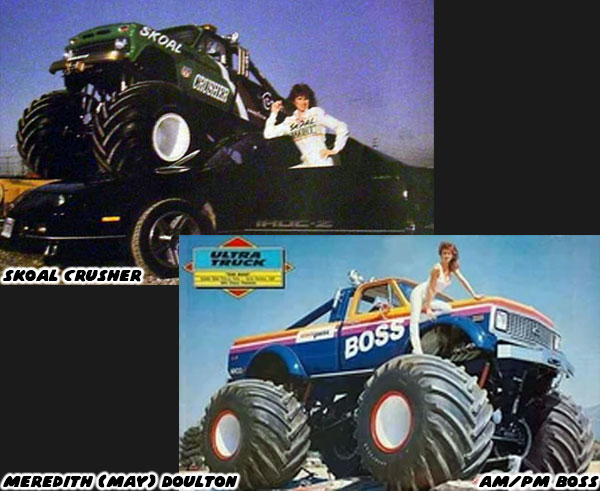
Beware the Boogey Man? NOPE! Beware the Boogey Van! Vans were rarely seen in monster truck competition. I can't think of any as quick as the Boogey Van. Pamela Vaters was one of the drivers competing regularly in the USHRA Monster Truck races.
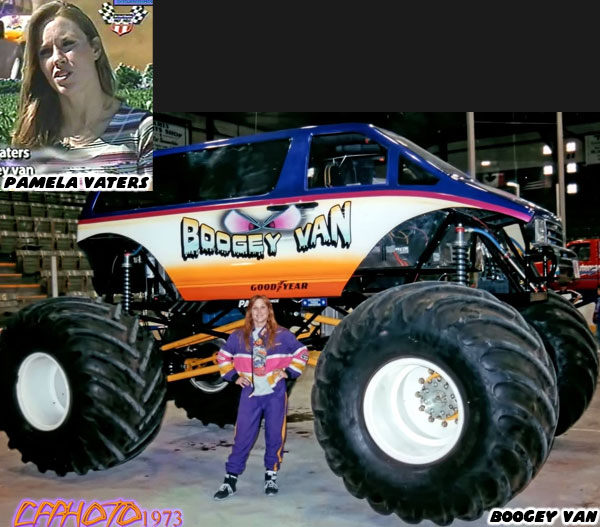
Thunder Chicken was a bright yellow racing truck driven by Karen Pensyl in early televised races. She took on classics like Mad Dog, Wild Hair, and the Carolina Crusher on TNT Motorsports.
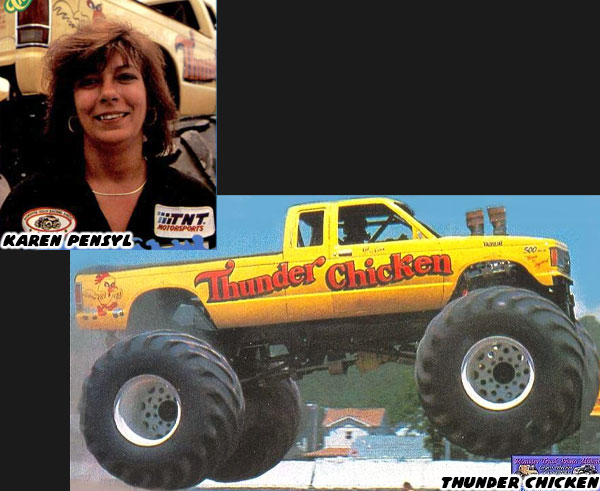
Monster trucks run in the family. Kaylyn Migues drives Jailbird. She's the daughter of monster truck owner / driver Darren Migues, and the sister of driver Tyler Migues.
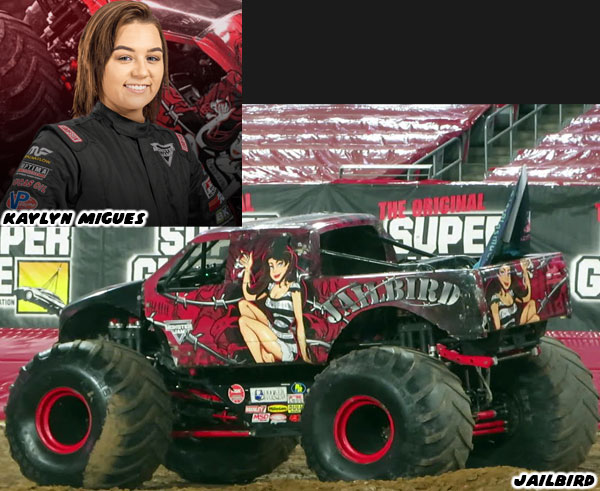
Two awesome women drove two awesome monsters. Miss Behavin, a stock car type monster was driven by Teri Olson, Julie Christensen drove a more traditional truck known as Misbehavin'.
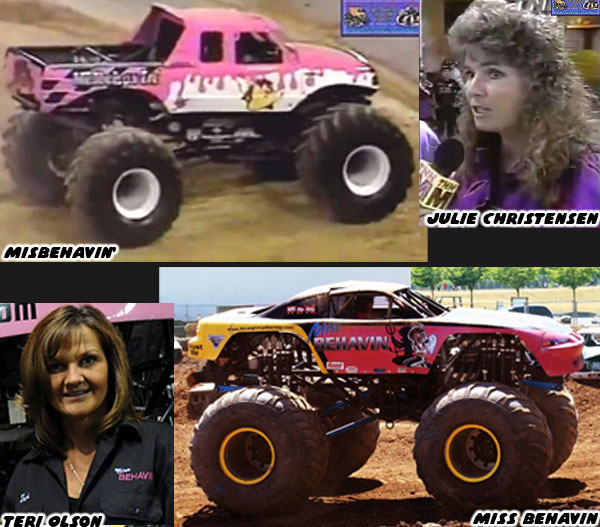
The wild looking Ms. Maniac monster truck was driven by Kristy Edge. She would sometimes compete against the Maniac truck driven by Don Frankish.
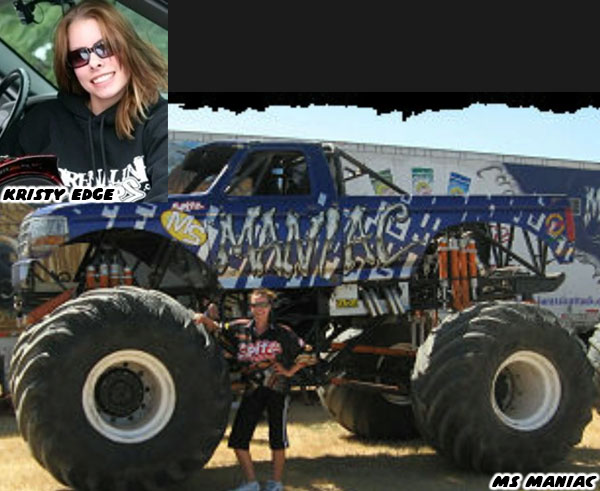
Stomper the monster truck, also known as Lethal Threat Stomper goes back to the early '90s. Different owners, different drivers then. Today it is driven by Macey Nichter, sometimes she lets her dad Joe drive it as well.
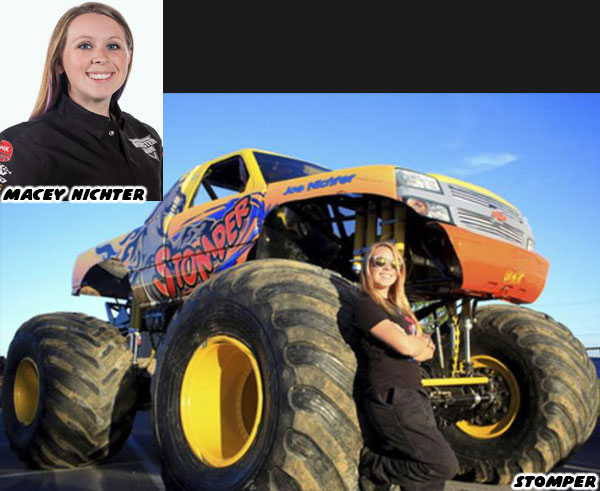
Not every great monster truck is in big stadium shows. Some are putting in their time in fairs, and local events. They are as important to the history of the sport. A salute to Shelley Kujat, and her gorgeous Shell-Camino monster for putting in the work.
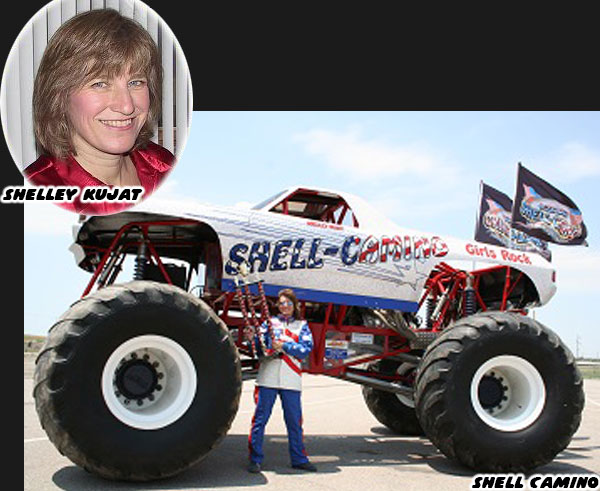
Dawn Creten is a titan of monster truck drivers. Whether a small local show, or a massive stadium tour, she always brings her best. She's known for driving the Scarlet Bandit, but has also driven Knucklehead from time to time as well.
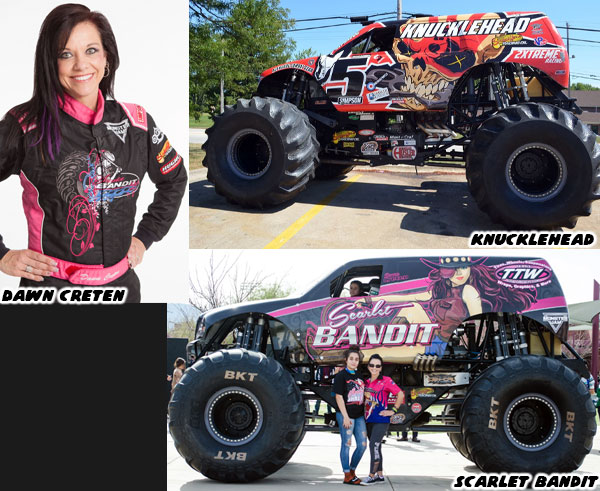
Who says monster trucks can't be inspired by fantasy? Nancy Rose has driven the brilliantly painted Black Knight, and Monster Mission.
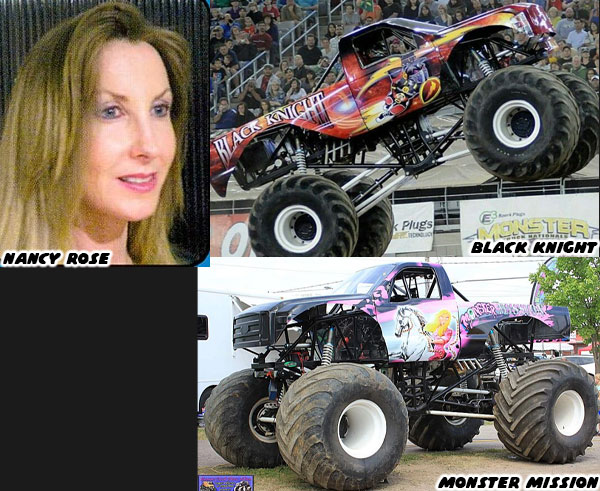
Maddie Meyers / Maddie Breaud was the driver of the Muddy Girl. This pink framed monster was the successor to the Eradicator. Maddie stepped down, and the truck was now driven by Anne Streach.
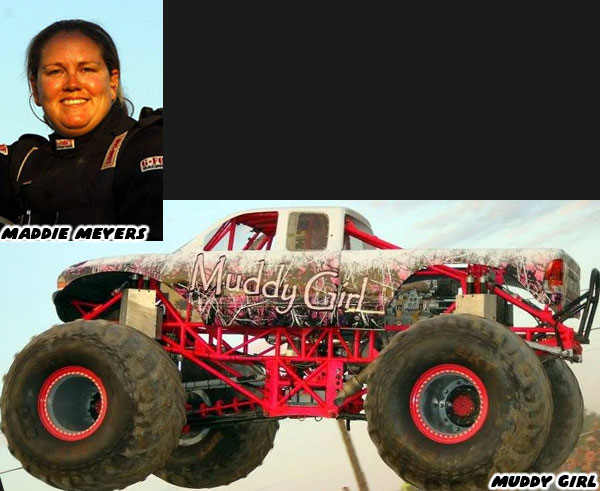
Shannon Quick drives the Girl Power monster truck, sometimes appearing on the No Limits Monster Truck tour. Its reflective foil, and hearts lavender body might be the brightest in the business.
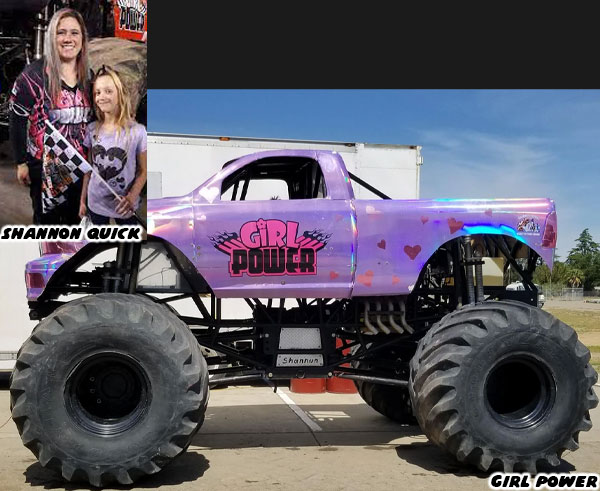
Whether competing in a smaller venue, or a stadium tour the modern crop of drivers knows how to handle any truck. Mikayla Tulachka for example has driven Get Er Done II, and Megalodon.
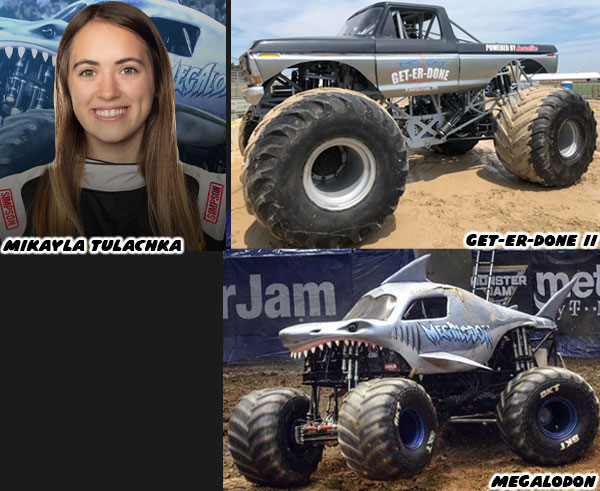
Once a racer, always a racer. Brianna Mahon cut her teeth racing micro sprint, and motocross before becoming the primary driver for Whiplash. The baby blue, classic body monster truck.
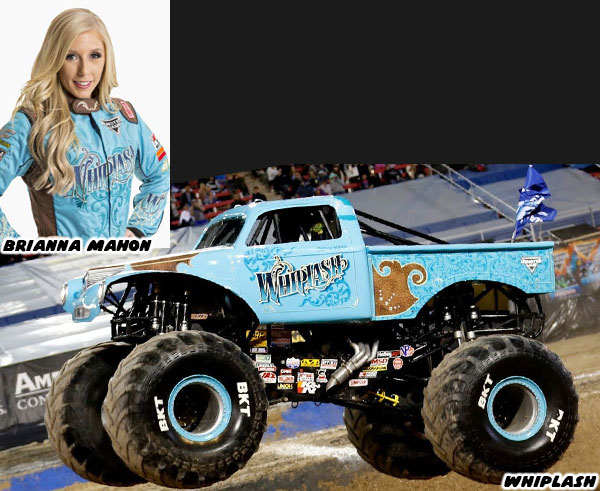
What girl doesn't look up to Wonder Woman? Well if you're Colette Davis then you are her. Well, at the very least she's the driver of the Wonder Woman monster truck.
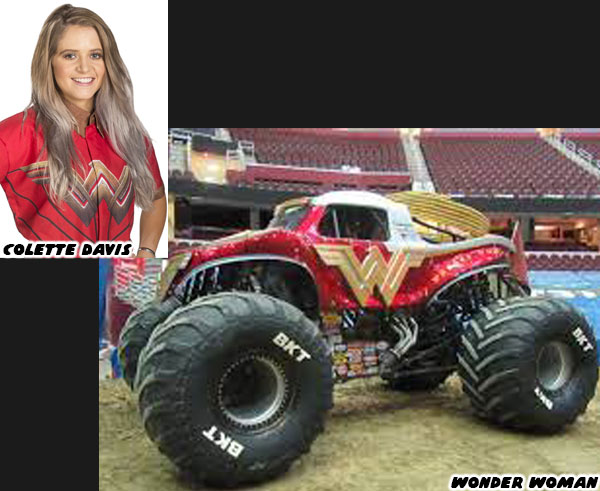
Amy Perry races out of Texas, and gets what she wants. Otherwise she'll throw a six ton Temper Tantrum in your general direction.
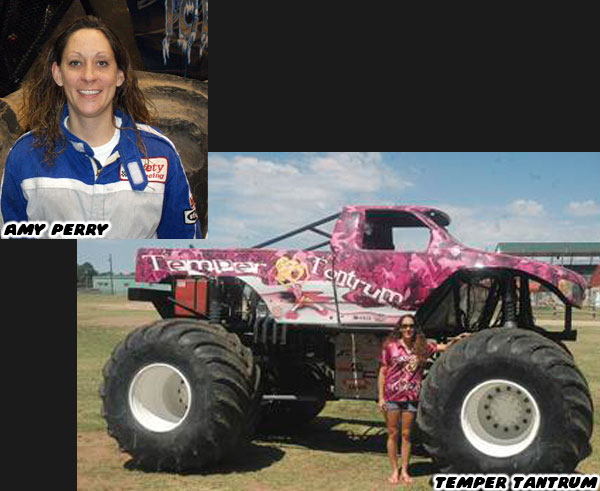
Pretty Wicked might have the most psychedelic paint scheme in monster truck history. Lindsey Rettew drives this technicolor beast.
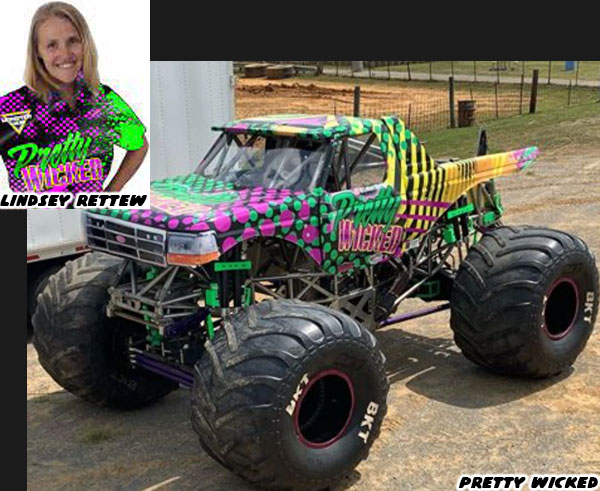
El Toro Loco has a few different drivers, two that share the distinction are Becky McDonough (she ties a pink bandana over one of the horns when she is driving), and Macey Nichter. Who wouldn't want this wild ride?
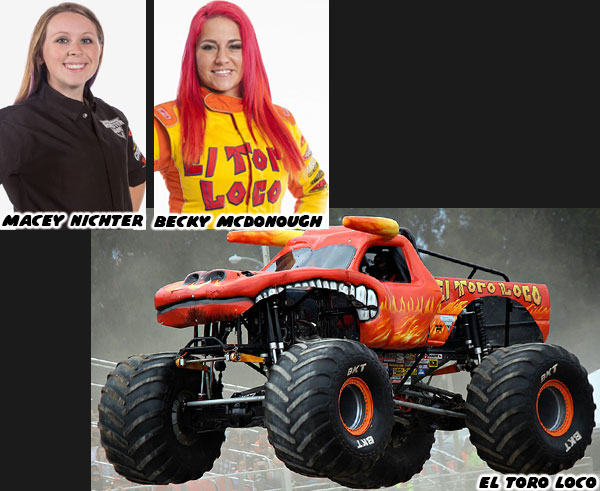
Women have made up a huge core of the Monster Jam tour. When teams are racing all around the country you might see different drivers at different stadiums. Here are just a handful of drivers for Scooby-Doo! Nicole Johnson, Bailey Shea Williams, Brianna Mahon, Dawn Creten, Lindsay Read, and Myranda Cozad.
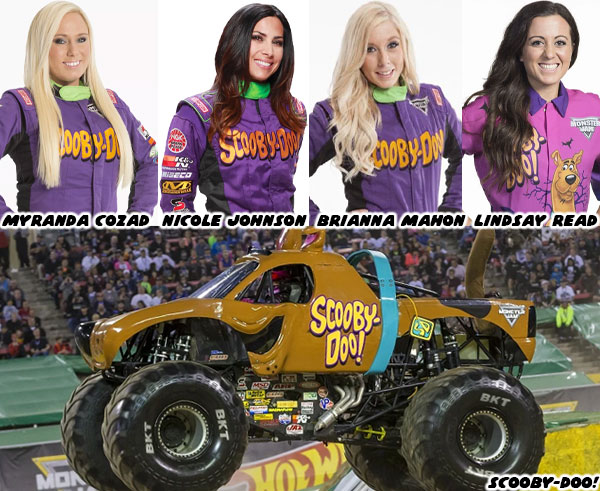
Quad Chaos is a fun monster truck, it's shaped like a gigantic quadracer. One of the drivers is Bailey Shea Williams. She usually sports a pink body whereas a green body is seen when Aaron Cain drives it.
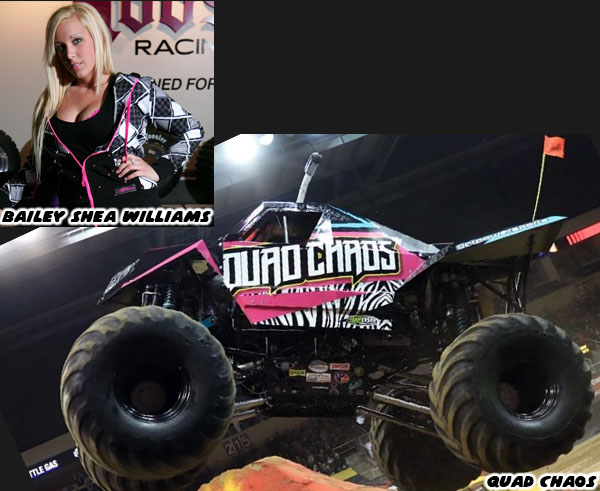
The pink stars and stripes of Madusa is well known on the Monster Jam circuit. There have actually been many drivers to the awesome truck, including Nicole Johnson, Debrah Miceli, Candice Jolly, and Bailey Shea.
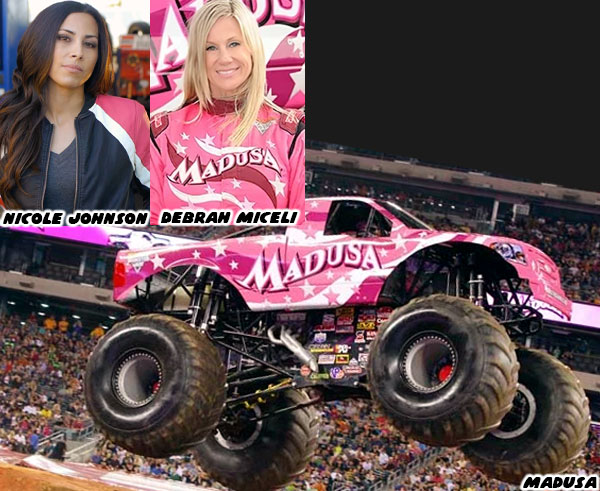
Who says monsters can't be playful too? Monster Mutt - Dalmatian has a few different drivers including Candice Jolly, and Cynthia Gautier.
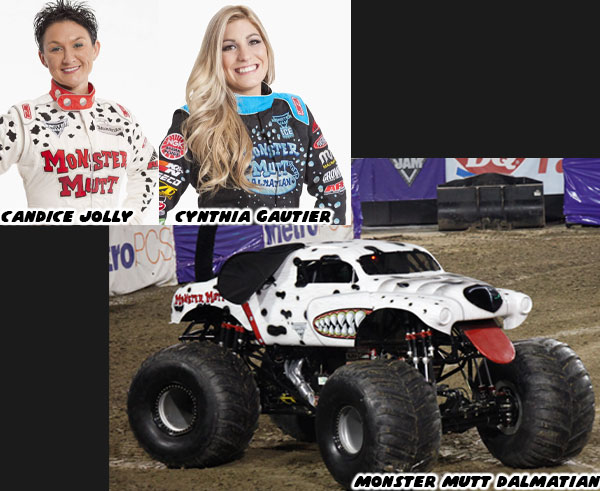
Meet Jocelyn Perrin the driver of Lady Luck, and High Maintenance (Soaring Eagle Casino). She's the monster truck mom with the radical rides.
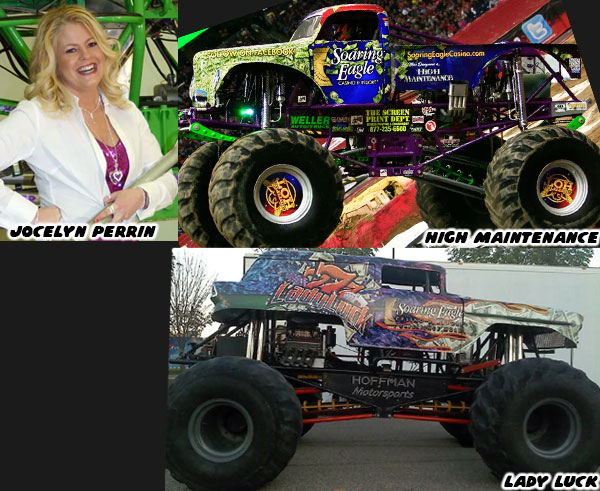
Myranda Kozad has raced a few different monster trucks, one of most unique is the Zombie Hunter. I'm sure she would come in handy if there was a zombie breakout.
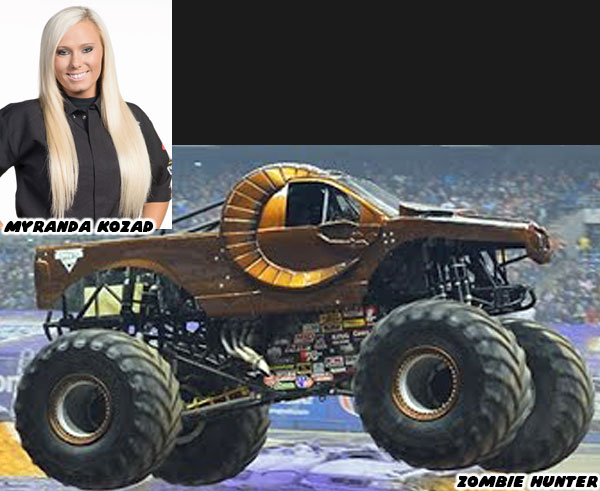
Rosalee Ramer, daughter of Kelvin Ramer was the youngest monster truck driver in the world. There are pictures of her as a little kid helping her father work on his own monster truck Time Flys. Her ride Wild Flower is a work of art.
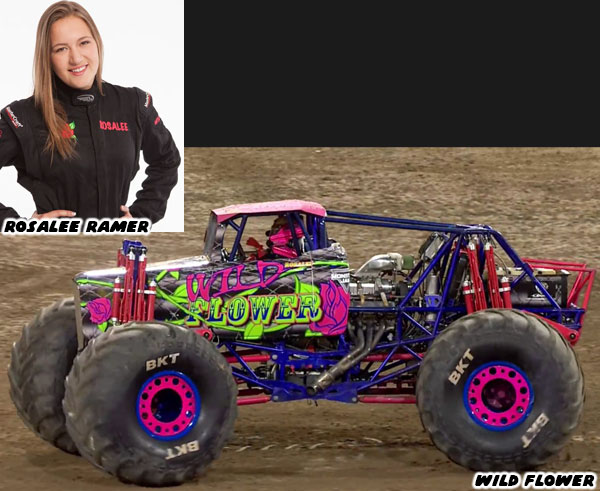
The next generation of monster truck drivers are already putting on shows in their scaled-down rides. Demolition Diva is driven by Mad Mo Morgan Matheny (Team Kid KJ) or Cassie Berry (Uncle Tod Motorsports).
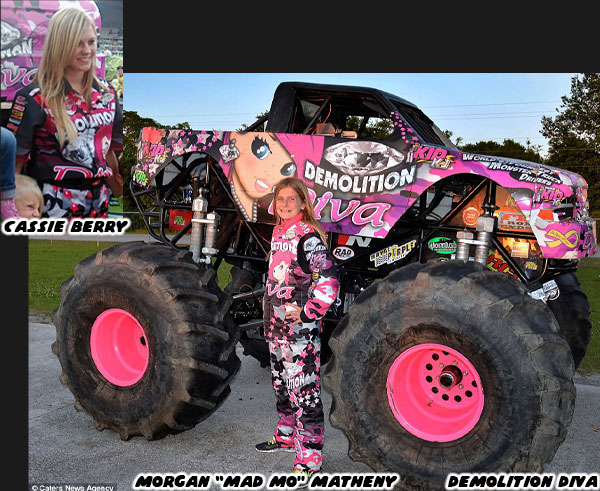
Dixie Chic is piloted by Kelby Schoenfeld (Lil’ Monster Trucks).
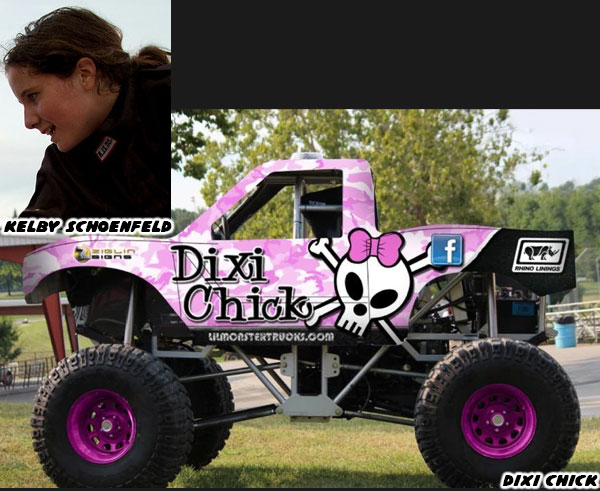
With American Girl by Ally Plenwniak, and Kelby (Lil’ Monster Trucks). The future is in very good hands.
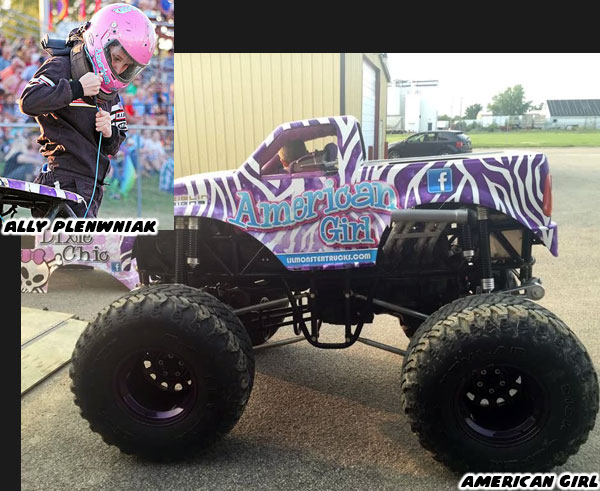
Cynthia Gauthier drives the Lucas Stabilizer. It's one of the newest, and possibly coolest truck on the list. Women have always been a part of this awesome motorsport. Remind your daughters that they can do anything, as long as they work hard for it nothing is impossible.
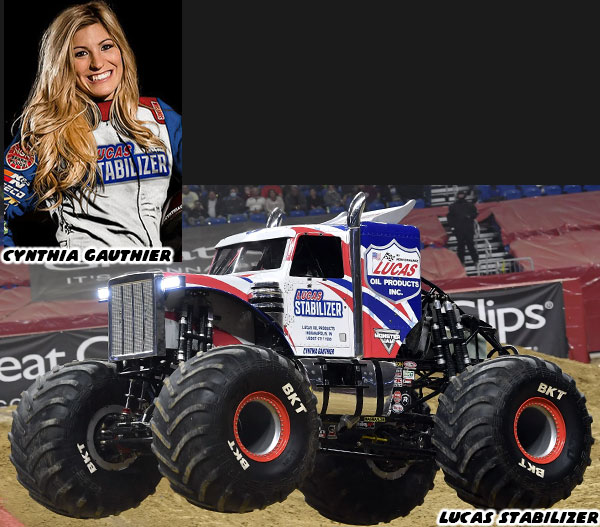
As I said in the start of this entry that I have always been a fan of monster trucks. If you want to find out about the history of the culture, and how it has appeared in gaming then be sure to check out my previous entries.
Are there any motorsports, or car cultures that you are into? Like hot rods, lowriders, import tuners, drifting, NASCAR, Formula-1, or associated video games? If so I'd like to hear about it. As always if you would like to sponsor me
please visit my Patreon page and consider donating each month, even as little as $1 would help make better blogs and even podcasts!
